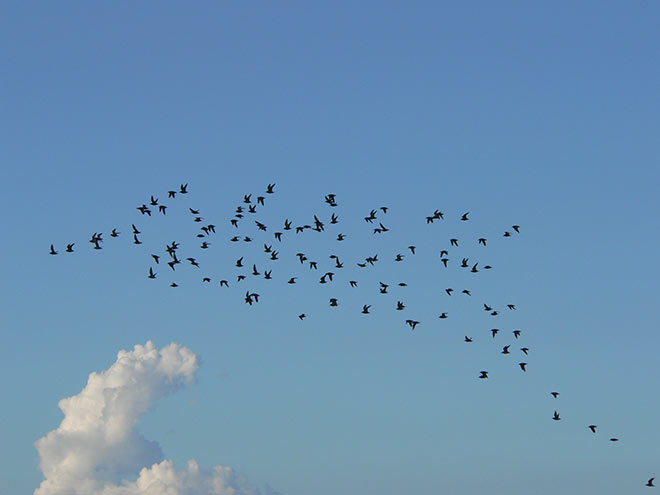
Many migratory species fly in flocks, which may help less experienced birds find the way. Flying in a flock like these lesser knots is also more energy efficient, as the wingbeats stir up the air, reducing its resistance. The best place to fly is behind the wingtip of another bird, as each down-stroke creates a swirl of upwashed air. For long distances, birds fly in a V formation to make the best use of this principle.
Te whakamahi i tēnei tūemi
University of Otago
Photograph by Phil Battley
This item has been provided for private study purposes (such as school projects, family and local history research) and any published reproduction (print or electronic) may infringe copyright law. It is the responsibility of the user of any material to obtain clearance from the copyright holder.







Tāpiritia te tākupu hou